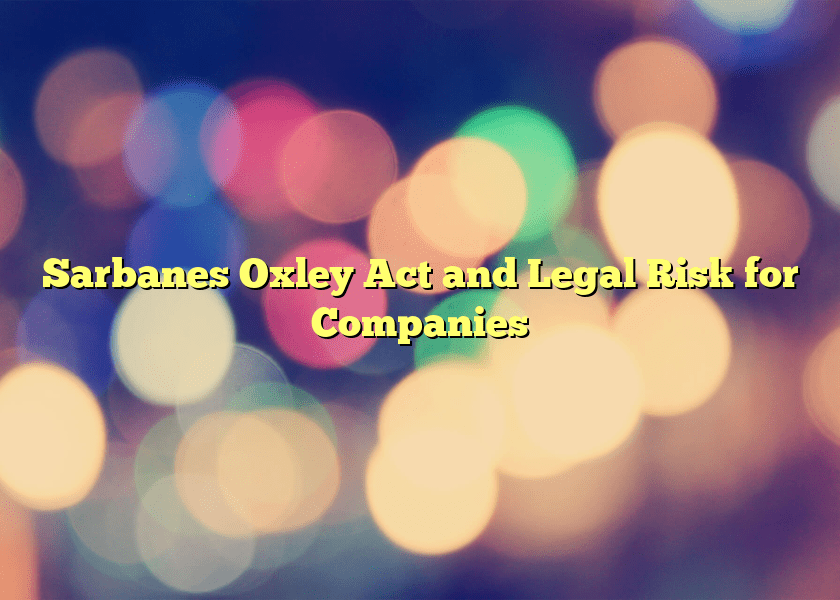Sarbanes Oxley Act and Legal Risk for Companies
Sarbanes Oxley is not only the original Act, but also all the interpretations in the new (after Enron and World Com) legal and political context. There is no room to “forget” to include legal proceedings after Sarbanes Oxley. The Act imposes a number of new disclosure requirements designed to enhance visibility.
– Disclosure of financial information prepared in accordance with (or reconciled to) generally accepted accounting principles… that reflect all material correcting adjustments that have been identified by a registered public accounting firm in accordance with GAAP and applicable securities laws.
– Disclosure of all material off-balance sheet transactions, arrangements, contingent obligations and other relationships with unconsolidated entities.
– Disclosure of codes of ethics for senior financial officers and, if a code of ethics has not been adopted, the reasons why the issuer has not done so.
– Real-Time Disclosure (§ 409). Under the Act, issuers will be required to disclose to the public, in plain English and on a “rapid and current basis,” such additional information concerning material changes in the issuer’s financial condition or results of operations as the SEC determines, by rule, is necessary or useful for the protection of investors and in the public interest.
And, disclosure of the legal risks ( www.legal-risk.com ):
– The “whistleblower” protection for employees who assist in investigations of securities fraud claims against their companies (§ 806) ( www.sarbanes-oxley-act.biz/SarbanesOxleyAct.htm )
– An issuer may not discharge or discriminate against an employee who assists in an investigation, or participates in a proceeding against the issuer, regarding any conduct that the employee reasonably believes constitutes a violation of securities laws or constitutes fraud against the issuer’s shareholders.
– Retaliation against Informants (§ 1107)
– It is unlawful to knowingly and intentionally retaliate against any person, including interfering with the person’s lawful employment, for providing a law enforcement officer with any truthful information relating to the commission or possible commission of a federal offense. A violation of this provision may lead to fines and imprisonment for up to 10 years.
– The destruction, alteration or falsification of documents (§ 802)
– The destruction of corporate audit records (§ 802)
– The White-Collar Crimes (§ 903, 904) ( www.sarbanes-oxley-act.biz/SarbanesOxleyAct.htm )
– The “mistakes” or “omissions” in the certification by corporate officers (§ 906)
It is a criminal offense for the chief executive or chief financial officer of an issuer to file certifications of periodic reports, as required by Section 906 of the Act, knowing that the periodic report accompanying the statement does not comport with all of the requirements of the securities laws, as attested to in the certificate.
A “knowing” violation of this provision carries a maximum punishment of a fine of up to $1,000,000 and imprisonment for up to 10 years. A “willful” violation of this provision carries a maximum punishment of a fine of up to $5,000,000 and imprisonment for up to 20 years.
Companies have to explain to their investors all the risks, otherwise their public statements are misleading. And, if shareholders lose money, they will blame the company for hiding information.
The worst nightmare for companies is called Class action.
– A lawsuit against a corporation is granted class action status by a judge
– All shareholders receive a letter alerting them of the litigation
– Attorneys advertise the terms of the award in major newspapers, and encourage shareholders to contact them
– Law firms issue press releases announcing the filing of a securities fraud class action
– Lawyers in class action cases keep about one-third of any negotiated settlement or jury award, so they do not want money from the shareholders
– If you are a shareholder, you lose nothing and you have much money to expect
The negative publicity is a disaster for any company (and for its stock price).
